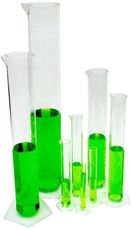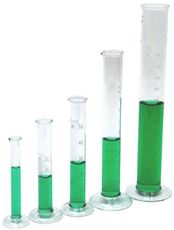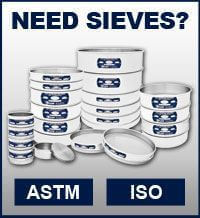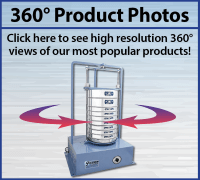- Log in
- Favorites List
-
Shopping Cart
You have no items in your shopping cart.
- Gilson Chat
Graduated Cylinders
Graduated Cylinders are available in either glass or plastic. Our variety of sizes is meant to meet all your laboratory needs. Available in sizes ranging from 10ml to 2,000ml. Single-scale graduations from 0.2ml to 20ml etched on the cylinders allow precise measurement of liquids. Cylinders are roll-resistant and reusable.
Plastic Graduated Cylinders
Glass Graduated Cylinders

- Glass Cylinders are made of durable borosilicate glass and have large, stable bases that are resistant to rolling. These acid-resistant cylinders are etched with single-scale graduations on the cylinder. The cylinders offer wide rims and utilize tapered pour spouts to ensure ease of filling and pouring.
- Plastic Cylinders With large, stable bases and convenient molded-in graduated scales, Gilson’s Plastic Graduated Cylinders are available in a range of sizes from 10ml to 2,000ml. They are constructed of rigid, transparent polymethyl pentene (PMP), which resists impact. The cylinders can handle temperatures up to 245°F (118°C). Single-scale graduations from 0.2ml to 20ml. It is not recommended for use with chlorinated solvents or strong oxidizing agents.
What is a graduated cylinder used for?
Many laboratory chemicals are liquid solutions that must be used in precise amounts, as such, they must be measured accurately. The long length and narrow width of the cylinders allow for more accurate measurements compared to those of beakers or other labware.
How do you read a graduated cylinder?
Place the graduated cylinder on a flat surface. Bend or kneel so that your eyes are level with the height of the liquid inside the cylinder. They measure the volume of liquids in milliliters (ml). The liquid in a graduated cylinder typically bends downward due to surface tension; this is called the meniscus. Remaining at eye level with the height of the liquid level, use the graduation markings on the cylinder to read the measurement at the center of the meniscus (curve).
What sizes are available?
Our cylinders range in volume capacity from 10 to 2,000ml, and we offer eight different sizes: 10, 25, 50, 100, 250, 500, 1,000, and 2,000ml.
Can a cylinder be heated?
Yes, although the glass models, which are made of borosilicate glass, can take more heat than the plastic cylinders. Borosilicate glass cylinders can withstand temperatures of 329°F (165°C) and are also resistant to thermal shock. Polymethypentene (PMP) plastic cylinders can resist heat up to 275°F (135 °C).
Beaker vs graduated cylinder — what’s the difference?
The most obvious difference between a beaker and a cylinder shapes beakers are larger with a wider shape while cylinders typically have a smaller capacity and are shaped taller and narrower. Gilson’s glass beakers range in size from 50 to 1,000ml, and the stainless steel beakers range from 500ml to 12qt. Markings on a beaker are not precise and are designed more for estimation rather than obtaining a precise measurement. The graduated cylinder offers a higher level of precision and accuracy.
Why is a graduated cylinder more accurate than a beaker?
A graduated cylinder is used routinely for measuring volume and is considered more accurate than a beaker because of the permanently marked incremental graduations incorporated in the clear cylinder. A beaker has approximate graduations and could be made of glass or metal, such as stainless steel, which makes accurate measurements difficult to obtain. The accuracy of a graduated cylinder is higher because the graduations on the cylinder make it easier to precisely fill, pour, measure, and read the amount of liquid contained within. Ensuring accuracy in the measurement of liquid within a graduated cylinder requires that the cylinder be placed on a flat surface and at eye level.
It should be noted, however, that when 100% accuracy and absolute precision are required, e.g., in laboratory testing to an ASTM or AASHTO standard, a Volumetric Flask is your best choice.
Volumetric flask vs graduated cylinder — which should I choose?
While a graduated cylinder offers more precision and accuracy than basic laboratory flasks and beakers, it is not designed specifically for volumetric analysis. The volumetric flask offers the highest level of precision and accuracy in accordance with ASTM E288 and E694 standards governing laboratory glass volumetric flasks and laboratory glass volumetric apparatus. Graduated cylinders have several etched graduations in ml divisions specific to each cylinder’s capacity. The volumetric flask has one marked graduation on the neck, which indicates the volume of liquid within the flask up to that marking.
Looking for beakers instead?



















